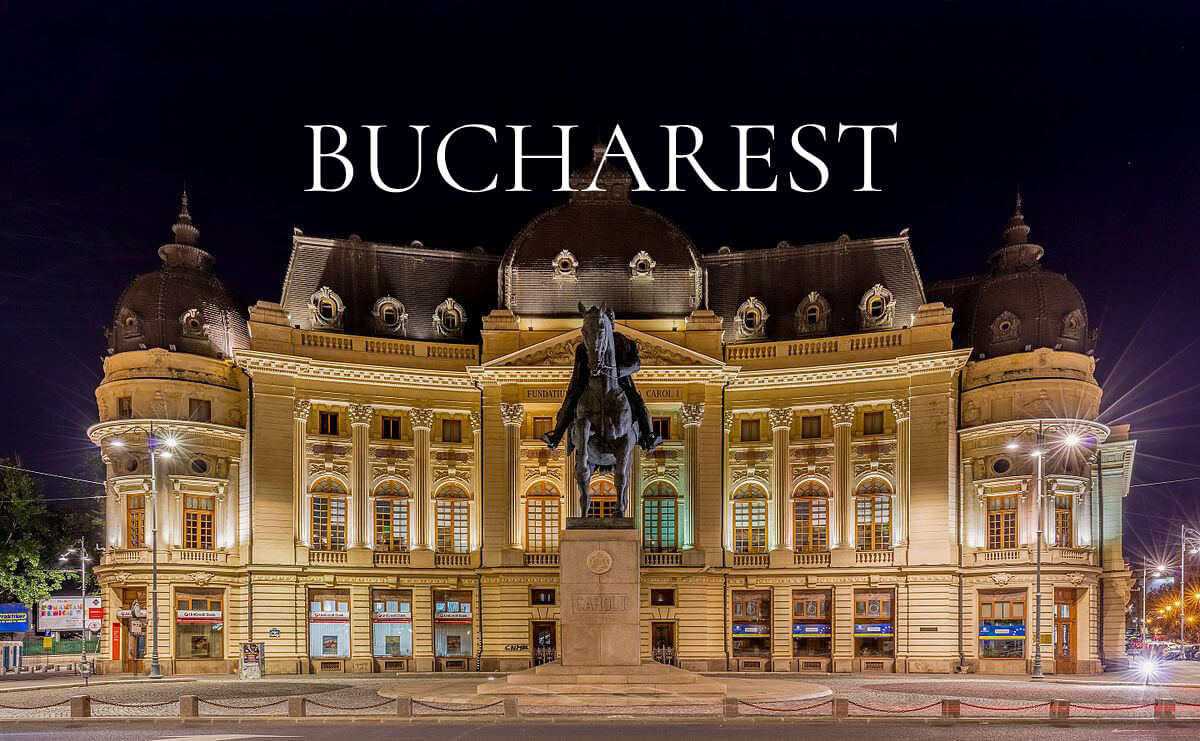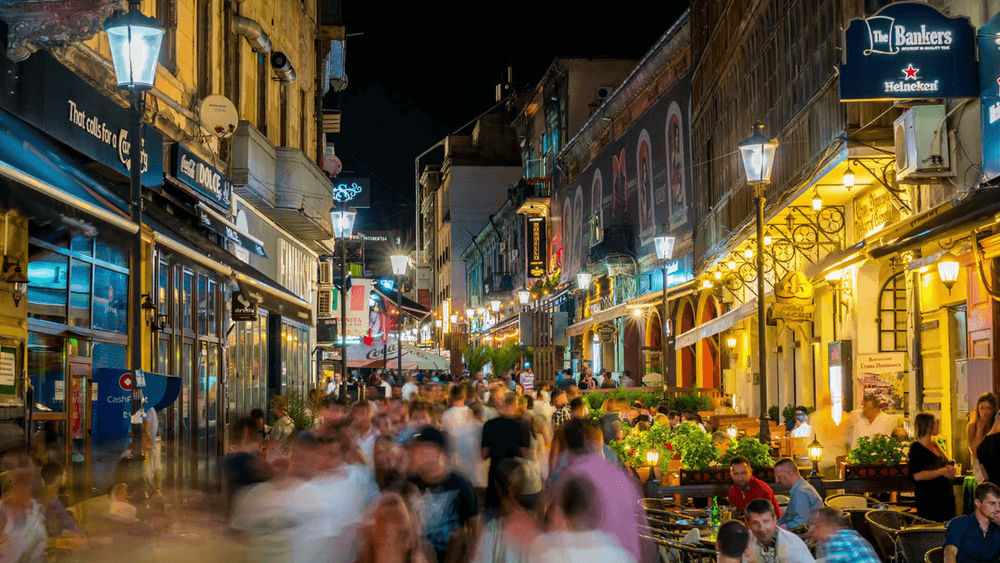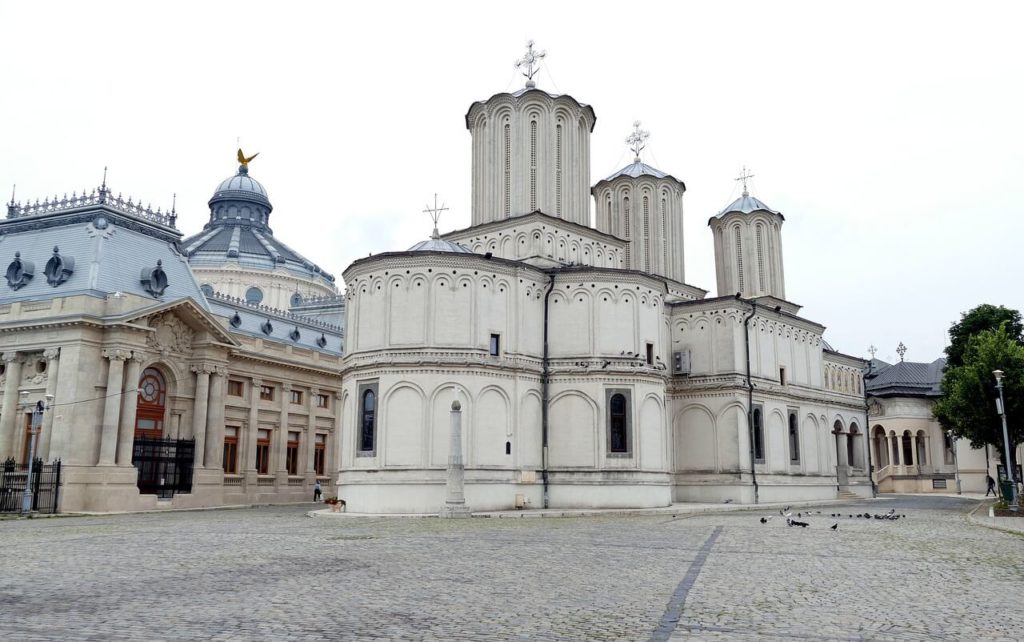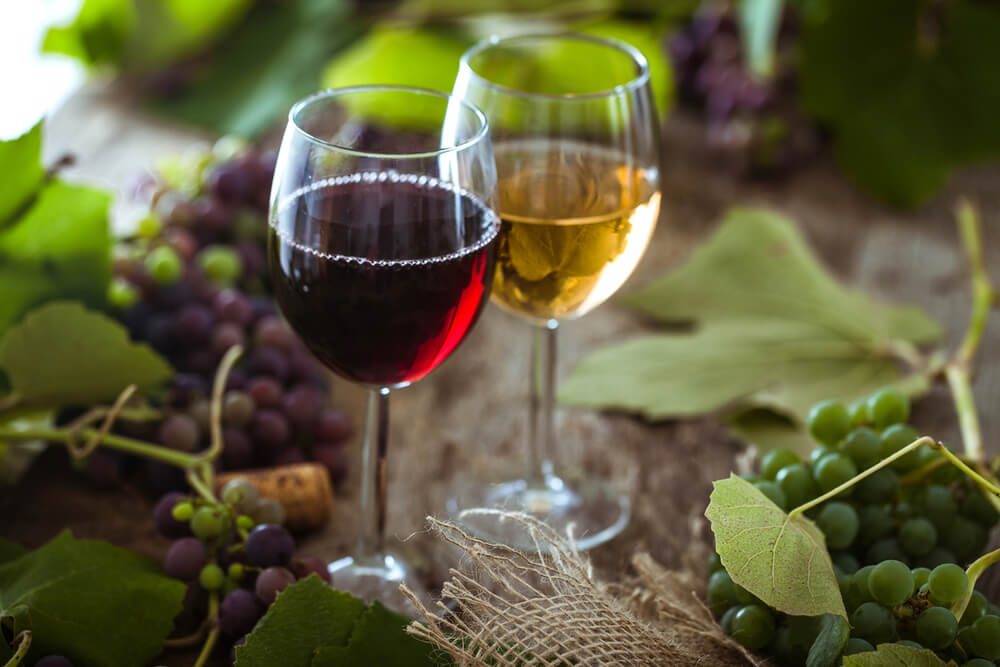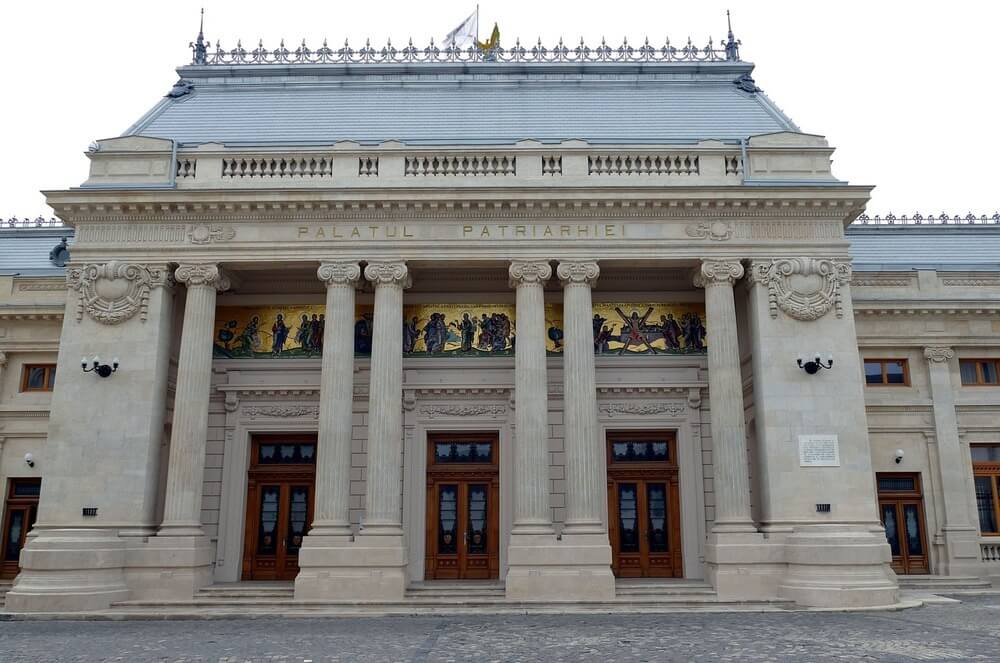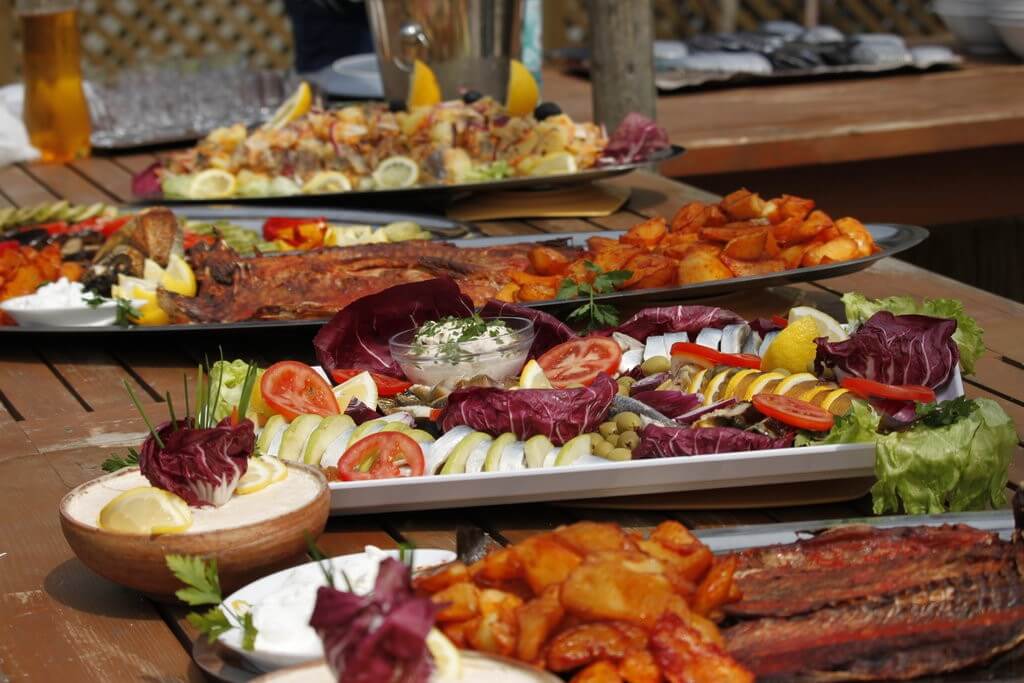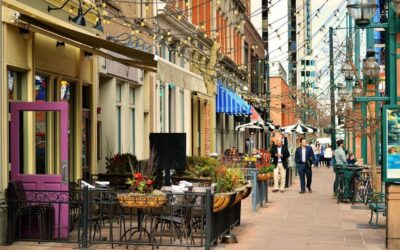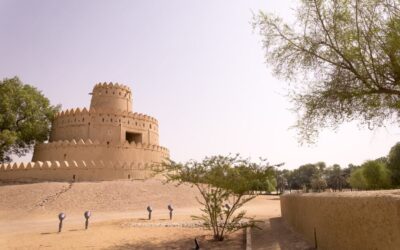Top Hidden Gems of Bucharest: 2-Day Itinerary
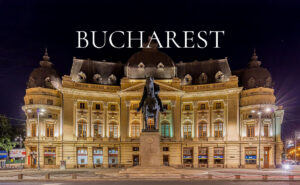 Bucharest is not a typical tourist destination, but it has a range of great attractions, as well as hidden gems that you need to visit during your trip.
Bucharest is not a typical tourist destination, but it has a range of great attractions, as well as hidden gems that you need to visit during your trip.
Check this Bucharest 2-day Itinerary by Sandra to find out more about the city!
Bucharest has come a long way for a former communist country.
After 25 years of dictatorship and a severely imbalanced economy, one can only imagine the struggles it took to reintegrate with the rest of Europe.
However, Romania has managed to overcome its gruesome past and eventually become one of the most attractive tourist destinations of the eastern block.
Today, the nation’s capital city is booming with contrasts. Nicknamed “Little Paris”, Bucharest possesses that peculiar French flair, with its very own Arc de Triomphe to cement the title.
The communist tree-lined boulevards are now bustling with excitement and they welcome all wayward visitors who wish to discover Bucharest’s hidden gems – and I took it upon myself to check that reputation… I must say, I wasn’t disappointed.
Tourism potential
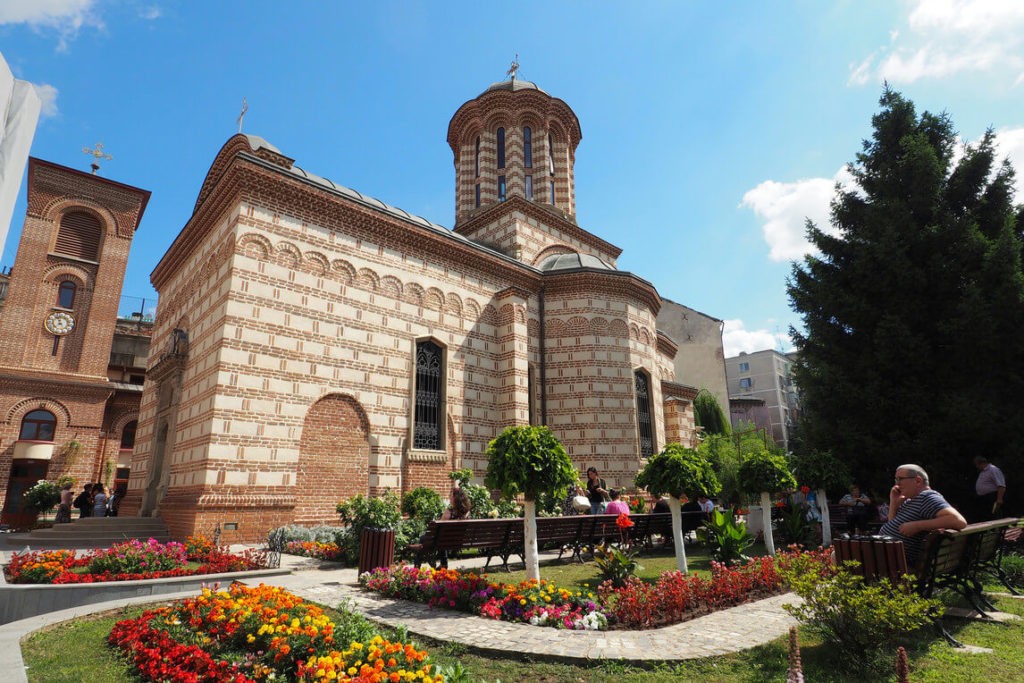
Unlike the Black Sea coast and Dracula’s Transylvania (check this Transylvania + Dracula castle trip, Bucharest doesn’t have a precisely-defined cultural style but boasts an amalgamation of both national and international culture instead.
The city’s architectural palette is very broad. It’s like one moment you are surrounded by high-end Art Deco and the next you are in between bricks of concrete followed by historic buildings popping out of nowhere.
Peculiar, indeed.
And some structures do have that characteristic communist or brutalist feel like the iconic Parliament Palace, which is the most gigantic thing I have ever seen!
Younger folk told me that after the autocratic reign of the notorious Nicolae Ceaușescu, the city has started to show its new colors. This is a city of diversity as far as the internet generation is concerned – and I walked through a lot of hip and urban streets in Bucharest to feel certain about this statement.
It has that international feel but one which you can’t find in the West somehow. The more you lean to the East, things become increasingly open-hearted.
Yes, it might not be one of the most orderly capitals of Europe but people here sure seem to enjoy life more. When its time to celebrate, these folks really celebrate!
I think this is the reason why tourism blossomed here. It may not be your deluxe urban destination like in London, Berlin or Paris – but it sure has spirit!
And I’ve heard many languages besides Romanian during my visit. Heard tons of different music, too. I was even surprised by the amount of stag do parties, considering that you can easily distinguish groups of westerners from the rest, blissfully drinking themselves to oblivion.
With relatively affordable prices for pretty much everything, Bucharest is definitely becoming a haven for bachelors, adventurers, and budget tourists.
The legend behind the name
Before I start with my two-day quickie through Bucharest, I’ll tell you how the name came to be. I’ve heard there are various myths surrounding the city’s etymology but the most popular is the story of Bucur (which literally means ‘joy, joyful’).
Although he was more likely a noble and landowner, legend says he was, in fact, a shepherd, who regularly played his flute on the Dambovita riverbanks to razzle and dazzle the passers-by.
He poured refreshing wine made from nearby vineyards to local traders, who – get this – decided to name to the entire area in his honor. Adding the suffix -ești means the settlement is derived from a personal name so this guy Bucur sure meant business.
Bucharest 2-day itinerary
Day 1
I’ve read that the airport in Otopeni in the 90s (when the revolution was over) looked in complete shambles. Foreigners who landed here were mobbed once they left the customs because people were left with almost nothing after Ceaușescu’s iron hand rule.
Nowadays, the airport is on par with its western counterparts so it’s safe to say the country rose back from the ashes.
Stavropoleos Church (Biserica Stravrapoleos)
My journey started with a visit to a small-size church, which looks something like a jewelry box. Stavropoleos has this lavish exterior and interior choral style ornamentation with intricate stone and wood carvings decorating its walls.
This is one of the city’s oldest houses of worship and boasts restored 18th-century wall paintings, a collection of Byzantine sacred artifacts, music books, and religious texts.
Originally built as a women’s monastery, the church’s courtyard is swarming with tombstones surrounded by colonnades and oriental arches.
Patriarchal Cathedral
On Dealul Mitropoliei, you can find a holy landmark, which opens its arms to both worshipers and curious tourists. The Romanian Orthodox Patriarchal Cathedral’s interior is real eye candy as you enter the Brâncovenesc-style structure.
Apparently, all of the original frescoes were destroyed, except the icons of the cathedral’s patron saints – Constantine and Helen. Present-day works of art painted on the walls are done by Dimitrie Belizarie at the beginning of the 20th century – and they are gorgeous to look at!
Many religious holidays and gatherings take place in this cathedral, such as the Palm Sunday pilgrimage and the Orthodox Mass, which is known for its a cappella choir. Interestingly enough, the front of this site was the assassination place of a Romanian prime minister back in 1862.
Palace of the Parliament
A lot of people considered this monumental structure an irony because it was called the “People’s Palace” made solely for one person – Nicolae Ceauşescu, who was, in fact, killed in the revolution before the building was completely finished.
Yet, its marble-plated halls are breathtaking. They ooze such splendor and grandeur, you are basically left speechless when you realize the magnitude of this structure.
No wonder it is the heaviest building in the world.
For an extra fee, I took a tour of the basement, saw the balcony where Michael Jackson greeted the Romanian public (the first international star to do so after the fall of communism), and climbed the roof terrace to enjoy one of the best panoramic views of the city.
The megalithic structure also houses a contemporary art museum, ethnographic display of traditional Romanian garbs, and a whole bunch of lavishly decorated conference rooms.
Muzeul National al Satului “Dimitrie Gusti”
If you ever wondered what this country looked like centuries ago, this is the place to really immerse yourself in Romania’s past. Founded on the shores of the Herăstrău Lake back in 1936, the open-air site exhibits almost 300 historic structures depicting the rural architecture of all the country’s regions.
This place has it all – thatched barns, farmsteads, peasant homes with characteristic steep roofs, wind- and watermills, etc. It even has a wooden church nestled within the compound as well as earth houses made of, well, earth.
This place is like a time capsule, complete with an authentic 19th-century inn and restaurant. Tours are available in a multitude of languages and you can also find a souvenir shop that sells local crafts, artwork, and traditional Romanian sweets.
Day 2
Wine tours and tastings
Romania is a well-known wine producer and exporter so I couldn’t go home without taking part in one of the wine tasting tours. They usually last an entire day, you get to see the beautiful countryside outside of Bucharest’s urban area and learn about the traditional winemaking processes.
Due to their immense popularity, these tours are available in many languages, including English, French, German, Italian, and Spanish.
In my personal experience, my tour started with the visit to the Cellar Museum in the village of Valea Călugărească. It was small but packed all sorts of ancient wine barrels, bottles, and equipment to look at.
After a short drive to the town of Urlati, I saw the Bellu Manor, built in the classic Romanian style back in the 19th century. The place is full of history and very peculiar traditional items with interesting backstories.
Next, we headed to the Lacerta Winery to visit the cellars and sample some of their best wines, which was definitely a fun sommelier experience for my taste buds. Finally, we headed back to Urlati at the well-preserved Urleteanu Manor overlooking the entire town to savor some local delicacies, which are included in the price.
After the meal and a little chilling time, we headed back to Bucharest and I was dropped off at my hotel, ready to finish my little excursion.
Bucharest Cuisine
Truth be told, they excessively use fat, forcemeat, and salt, which some may find unhealthy. I, on the other hand, say it’s delicious. That is their characteristic heartiness.
The mouthwatering traditional dishes reflect the hedonistic drive that the Romanian people have – and I ain’t in a position to judge that culinary outlook on life.
You can find many foreign influences contributing to the peculiarly vigorous Romanian gastronomy, including Greek, Russian, Turkish, Bulgarian, and Hungarian.
Rural places, in particular, have that distinct traditional flair so I always recommend you visit the countryside to savor such delights.
Bucharest also boasts plenty of eateries where international culinary curiosity can be satisfied. Whether you are up for French, Italian, Indian, American or Chinese specialties, the capital city is here to honor such wishes.
However, I still deeply recommend you get yourself in the mood for gastronomic experiments because Romania has some of the best traditional dishes, such as…
- Chiftele – fried spicy meatballs with herbs, salt, pepper, and garlic. They can either be eaten as such, marinated in tomato sauce or served with rice or mashed potatoes on the side. Usually, they are made of pork but some do like to roll them with beef or chicken meat.
- Mititei – this mixture of minced pork, lamb or beef is considered the favorite among Romanian people. The dish is very popular in Bucharest among tourists, too, as you will see them crowding the outdoor stalls and low-key eateries as well as fancy restaurants to have a taste of this versatile specialty.
- Toba – is traditionally prepared for the Christmas holidays. It is made of pigs leftovers, which are wrapped in its own stomach and simmered. When the final product is complete, it is left to dry and served with pickles, mustard, and other combinations.
- Tochitura – strict nutritionists think of this meal as an outrage but it melts in your mouth like no other. Pig is fried in its own fat, served with fried eggs, sausages, grated salted cheese, and cream. Also, pickles are a must when eating this delicacy.
- Drob – is made during Easter and is best described as lamb haggis served as a side dish. However, Romanians don’t simmer it but cook it in the oven instead. It consists of pre-boiled lamb organs, herbs, onions, and sometimes even hard-boiled eggs.
- Sarmale – is an immensely popular dish in the whole of Balkans. Basically, they are stuffed cabbage rolls, consisting of forcemeat. However, there are vegetarian varieties as well as rolls made of grapevine leaves, especially if you go on a winetasting tour.
Book a great Bucharest food tour here
If you really want to indulge your taste buds with some fine wining and dining, Bucharest is packed with classy international restaurants, such as The Artist, JW Steakhouse, Le Bistrot Francais, Fish House, and Modigliani Italian Restaurant.
However, should you desire to immerse yourself in the local culture and cuisine, then head on down to locales like the iconic Caru’ cu Bere, Vatra, Pescarus Restaurant, La Pescaria Dorobantilor, Zexe, and Hanu’ Berarilor Casa.
Transportation and hotels
Transportation can be the city’s downside. Bucharest is considered the most congested capital of the European Union. The transport network is not fully fit for that purpose, services are few, and trams, buses, and the four-lined metro are notoriously crowded.
People have the ‘car first’ mentality so pedestrians should take extra care than usual on the crossings. Hours can be wasted in traffic as main roads and intersections get regularly jammed, especially during rush hour. For convenience, you can rent a car.
As for accommodations, take advantage of the city’s downtown because hotels in the areas of Romana, Unirii, Victoriei, and Universitatii square are very close to bars, restaurants, clubs, and lots of major tourist sights.
There is a variety of hostels and budget hotels for adventurers or you can book hotels which are mid-range to luxury if you require comfort and quality service.
Word of advice: find accommodation that isn’t near the notorious traffic if you want some peace and quiet during evening hours, especially if you venture farther out of the city.
In conclusion
Sure, Romania can be called a country of Olympic gymnasts, catchy and trashy pop tunes, and, of course, Dracula.
But Bucharest is so much more than meets the eye.
The lively city has undergone a revolution – not just in a political sense but also culturally. It has become an international city, one which opens its doors to anyone who is willing to dare and explore.
If you ever get the chance to travel here, don’t miss out on the chance to experience its unique vibrant nightlife and uncover the hidden gems nestled amid its architecturally diverse streets.
As mentioned before, people here sure like to party and celebrate life. Considering what these people had to go through to get to where they are today, all I can say is – hats down to Bucharest!
Plan your perfect trip using my trip planner here and check posts about Vienna and Budapest
